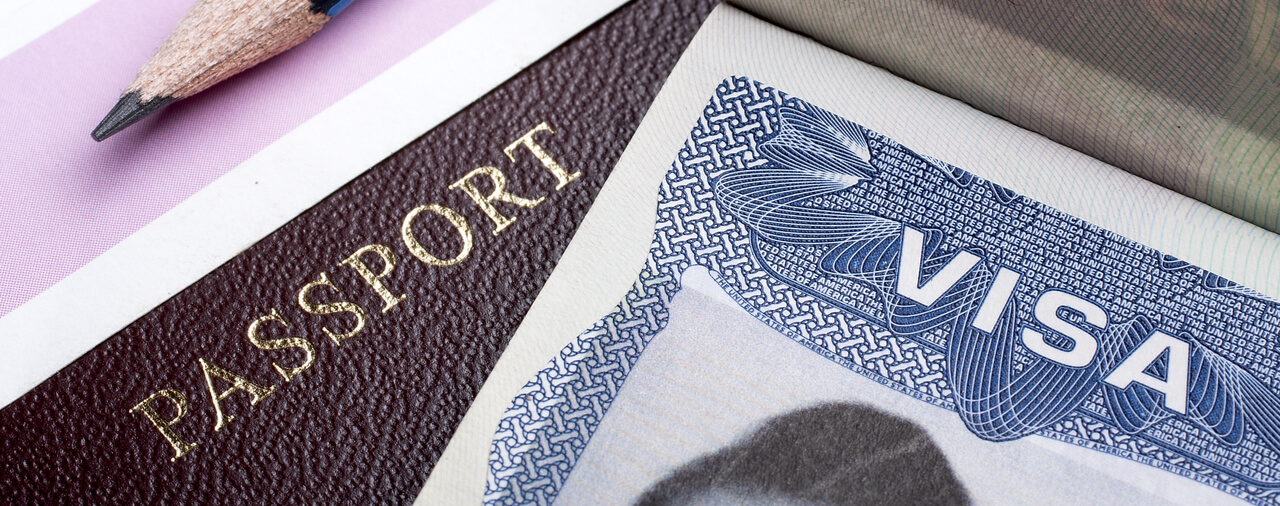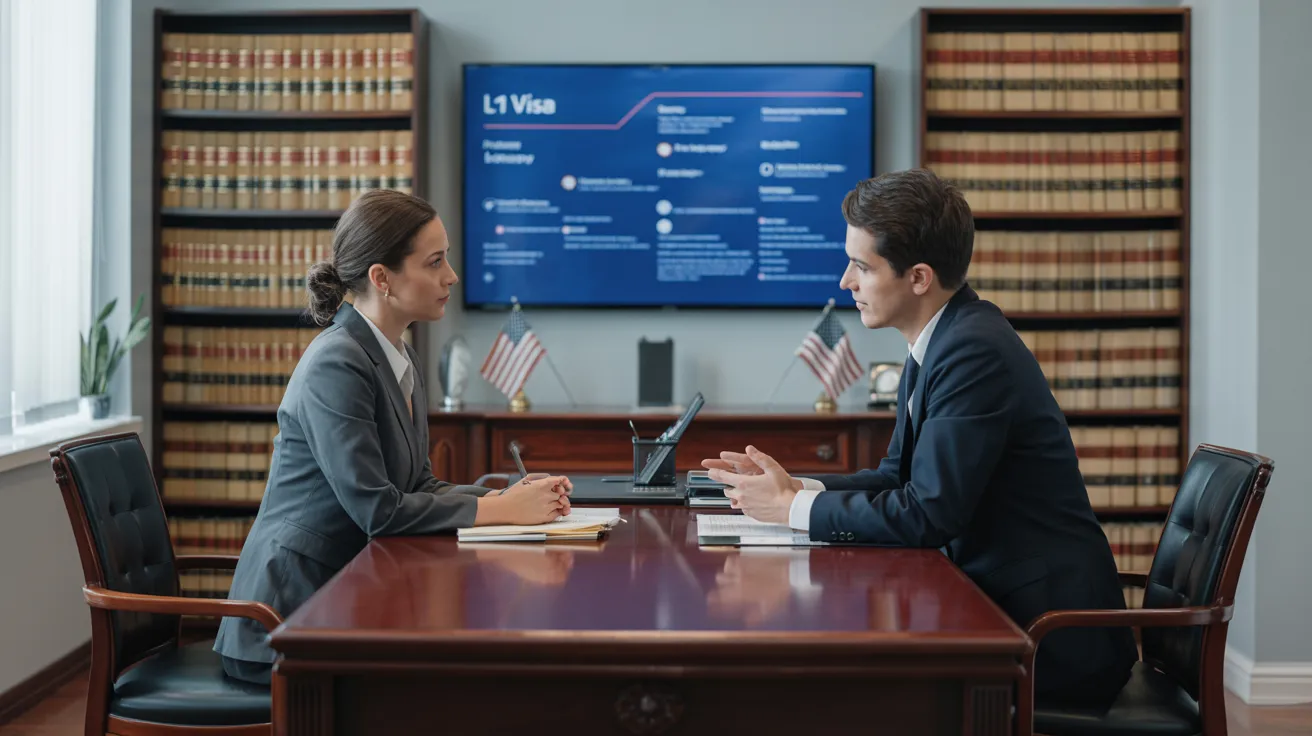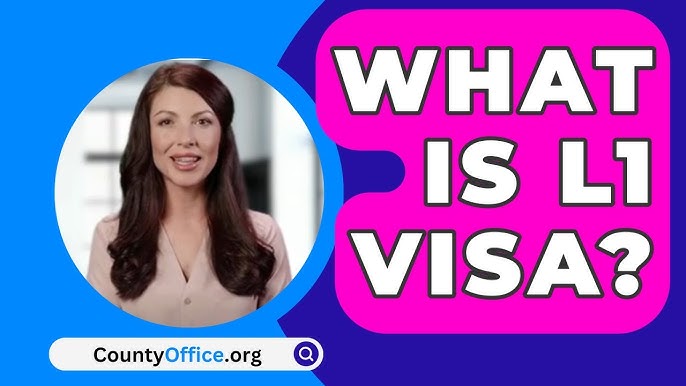Unlocking Opportunities: A Comprehensive Guide to the L1 Visa Process
The L1 visa process presents a vital pathway for multinational firms looking for to transfer vital workers across borders. Comprehending the nuances of qualification standards, the differences between L-1A and L-1B visas, and the intricacies of the application procedure can significantly influence an applicant's success. However, maneuvering this complex landscape is not without its challenges, and careful interest to documents and employer sponsorship is vital. As we explore the essential elements of this procedure, the strategies for getting over possible obstacles will end up being noticeable, exposing exactly how educated prep work can open up a globe of chances.
Understanding the L1 Visa
Recognizing the L1 visa involves recognizing its significance as an essential device for multinational firms looking for to transfer experienced employees in between international offices. This non-immigrant visa category facilitates the motion of execs, supervisors, and specialized expertise employees to the USA, therefore making it possible for companies to keep functional continuity and harness international ability effectively. The L1 visa is separated right into two key classifications: L-1A for supervisors and execs, and L-1B for employees possessing specialized knowledge.The L1 visa offers an essential duty in improving a firm's affordable side in the international industry - L1 Visa. By permitting firms to move their key workers, businesses can ensure that critical projects are handled by qualified individuals who are already aware of the firm's society and functional procedures. This interior transfer system not just promotes expertise sharing but additionally promotes technology and cooperation throughout borders.Moreover, the L1 visa is often preferred for its relatively straightforward application procedure contrasted to other visa groups, as it allows for dual intent, permitting owners to go after irreversible residency while on a short-term job visa. This function makes the L1 visa particularly appealing for both employers and staff members, as it simplifies the pathway for skilled experts to develop lasting residency in the United States
Eligibility Requirements
Qualification for the L1 visa rests on a number of crucial criteria that assure both the employee and the company fulfill particular qualifications. This non-immigrant visa is made for multinational firms to move workers from consular services to united state counterparts.Firstly, the employer needs to be a certifying organization, that includes a parent company, branch, affiliate, or subsidiary of an U.S. service. The company must have been doing organization for at the very least one year both in the united state and abroad. This assures that the company has enough operational stability and a reputable presence.Secondly, the staff member must hold a supervisory, executive, or specialized understanding position. For L1A visas, the candidate should demonstrate managerial or executive certifications, while L1B visas concentrate on specialized knowledge associated to the organization's items, services, or procedures. Furthermore, the staff member must have functioned for the international entity for a minimum of one continual year within the last three years before their application.Lastly, the worker's function in the united state need to align with their previous placement, making certain that their abilities and knowledge are leveraged for the company's advantage.
Sorts Of L1 Visas
The L1 visa group comprises 2 primary kinds developed to help with the transfer of staff members within multinational firms: the L1A visa for supervisors and execs, and the L1B visa for staff members with specialized knowledge. Each type offers unique objectives and has certain qualification criteria.The L1A visa is tailored for people who hold supervisory or executive positions within a company. This visa enables top-level workers to move to an U.S. branch, subsidiary, or affiliate of the very same organization. Candidates for the L1A visa have to show that they have been used in a managerial or executive capacity for at least one continual year within the previous three years before their application. Additionally, this visa uses a much longer period of stay, at first given for three years, with the opportunity of expansions for approximately seven years.In contrast, the L1B visa is planned for experts with specialized expertise associated to the company's items, services, or procedures. To qualify, candidates must verify that their competence is essential to the company which they have actually benefited at the very least one constant year within the last three years in a function that required this specialized expertise. The L1B visa is at first provided for 3 years, with expansions offered for approximately 5 years.Both visa kinds are crucial for firms seeking to enhance their international procedures by leveraging competent employees, therefore advertising technology and efficiency within the U.S. market.
Application Process
Steering via the L1 copyright procedure involves several crucial actions that must be carefully followed to guarantee a successful outcome. The procedure begins with the U.S. employer, that have to initially develop eligibility by demonstrating a qualifying connection with the international entity and confirming that the worker fulfills the particular requirements for the L1 visa category being sought.Once eligibility is verified, the company launches the process by submitting Type I-129, the Petition for a Nonimmigrant Employee, with the United State Citizenship and Migration Solutions (USCIS) This kind must be gone along with by an in-depth description of the task tasks to be executed, the business structure of both the united state and international entities, and the employee's credentials. It's essential to validate that all details is precise and complete, as noninclusions or inaccuracies can lead to delays or denials.Upon authorization of the I-129 request, the following action entails the employee using for the L1 visa at an U.S. consular office or consular office in their home nation. This stage needs the conclusion of Type DS-160, the Online Nonimmigrant copyright, and scheduling a meeting. Throughout the meeting, the applicant needs to present proof sustaining their certifications and the company's petition.After the visa is given, the employee can enter the United States to work in the marked duty. On the whole, cautious prep work and adherence to each step of the application procedure are vital for a successful L1 visa end result.
Needed Documentation

Essential Forms Required
Maneuvering the L1 Visa process requires cautious focus to the crucial types and documentation needed for a successful application. The key kind needed is the Form I-129, Application for a Nonimmigrant Worker, which have to be completed and sent by the U.S. employer. This form details the details of the work deal and the credentials of the worker looking for the L1 Visa.Alongside Form I-129, the applicant will require to complete Type I-539 if coming with family participants are also requesting visas. In addition, the employer must give proof of the qualifying partnership in between the united state entity and the international entity, typically demanding the submission of company files such as posts of incorporation or economic statements.Moreover, it is essential to include the L Classification Supplement to Type I-129, which defines the type of L Visa being requested-- either L-1A for managers and execs or L-1B for staff members with specialized knowledge. Finally, applicants need to guarantee that all forms are authorized and dated suitably, as incomplete submissions can lead to delays or rejections. Effectively putting together these important types lays the foundation for a smoother L1 copyright process.

Supporting Evidence Needs
Supporting documentation is important for a successful L1 copyright, as it validates the insurance claims made in the application. Candidates have to provide an array of records to show eligibility for the visa, which is classified right into two main kinds: evidence of the qualifying partnership in between the united state and international entities and proof of the candidate's qualifications.To establish the relationship, candidates must submit documentation such as company organizational graphes, monetary statements, and evidence of ownership. These files verify that the foreign business has a certifying relationship with the united state employer, whether as a moms and dad company, subsidiary, branch, or affiliate.For the candidate's certifications, necessary papers consist of a detailed employment letter from the foreign company, detailing the candidate's job title, duties, and duration of employment. Furthermore, academic qualifications, such as levels and diplomas, should be offered to confirm the candidate's know-how in the relevant field.
Company Sponsorship Records

Usual Challenges
Maneuvering the L1 visa procedure offers several typical obstacles that applicants should understand. Secret problems usually include rigorous documentation requirements, potential delays in handling times, and the need for rigorous legal compliance. Understanding these challenges can help applicants much better prepare and reduce threats during their copyright journey.
Documentation Requirements
The L1 copyright process usually presents considerable difficulties connected to documents needs. Applicants have to provide substantial documentation to establish qualification, which can bring about confusion and potential delays. Secret papers include proof of a certifying relationship in between the united state and foreign company, proof of the candidate's employment history, and comprehensive details about the work role in the U.S.One typical challenge is collecting enough proof to demonstrate the nature of the qualifying connection. Business commonly struggle to existing clear business charts or financial declarations that show the link in between the entities. On top of that, making certain that letters of assistance from companies properly reflect the candidate's task responsibilities and credentials is necessary, as vague descriptions can result in denials.Another concern emerges from the need for thorough task summaries that straighten with the L1 visa classifications. Candidates need to verbalize not only their current role but additionally their supervisory or specific expertise responsibilities plainly. This necessitates a comprehensive understanding of both the candidate's placement and the regulative language made use of in L1 applications.
Handling Time Hold-ups
Experiencing delays in handling times is a typical difficulty encountered by L1 visa applicants, commonly resulting in irritation and unpredictability. A number of aspects add to these hold-ups, including high application quantities, enhanced analysis of applications, and administrative backlogs within the united state Citizenship and Immigration Services (USCIS) Applicants might locate that handling times can differ greatly depending on the service center managing their application, as each center has its own work and performance levels. Additionally, the complexity of the applicant's situation, such as the need for extensive documentation or explanation, can better prolong wait times.In some circumstances, issues connected to the applicant's existing migration standing or previous visa history might also bring about additional delays, as USCIS may need more evaluation or information. It is vital for prospects to continue to be aggressive throughout this duration, maintaining open communication with their employers and legal reps to resolve any kind of possible worries promptly.Understanding these processing time difficulties can aid L1 visa candidates prepare for feasible delays and mitigate the impact on their shift and career plans. Persistence and diligence are crucial merits in maneuvering this elaborate process.
Lawful Compliance Issues
Lots of L1 visa candidates encounter legal conformity problems that can complicate their journey towards getting the visa. Recognizing and adhering to the particular regulations established by the U.S. Citizenship and Immigration Provider (USCIS) is crucial. Common obstacles consist of demonstrating the qualifying relationship between the international and U.S. employers, in addition to showing L1 Visa that the candidate possesses the requisite customized expertise or managerial capacity.Additionally, applicants need to offer extensive documents outlining their task tasks, business structure, and economic practicality of the united state entity. Insufficient or unreliable documentation can bring about hold-ups and even denials. Employers have to additionally guarantee that they comply with labor regulations, including wage and working problem standards, which can affect visa eligibility.Another usual problem involves maintaining compliance with the terms of the visa once approved. Changes in employment standing, job responsibilities, or company structure can require amendments to the visa, which otherwise dealt with without delay can bring about lawful complications. Because of this, remaining notified concerning conformity requirements and looking for legal guidance when necessary is necessary to navigate the intricacies of the L1 visa procedure successfully.
Tips for Success
Success in the L1 copyright process frequently pivots on meticulous prep work and focus to detail. To boost your chances of approval, start by completely understanding the eligibility demands for both the L1A and L1B visa categories. Examine whether your position at the business certifies as managerial, executive, or specialized expertise, as this categorization especially affects your application.Next, gather comprehensive documentation that confirms your cases. This consists of business charts, thorough job descriptions, and proof of the company's operational structure. Clear and succinct evidence of the qualifying partnership between the united state entity and the international entity is essential. Confirm that all documents are arranged realistically and provided in an expert way, as this shows your dedication and seriousness regarding the application.Engage the solutions of an experienced migration attorney who specializes in L1 visas. Their expertise can verify invaluable, directing you via complicated policies and ensuring that all paperwork abides by existing laws. Furthermore, get ready for the interview by exercising response to typical inquiries and preparing to review your duty and contributions to the company comprehensive.
Frequently Asked Questions
Can Family Members Come With the L1 Visa Owner?
Yes, member of the family of L1 visa owners, consisting of spouses and single youngsters under 21, can go along with the main visa owner. They might likewise make an application for L2 visas, which allow them to live in the USA.
Just How Long Can I Remain on an L1 Visa?
The L1 visa enables first remains of approximately 3 years, with the possibility of extension. L1A visa holders may remain for a maximum of 7 years, while L1B visa owners can stay for five years.
Can L1 Visa Holders Apply for a copyright?
Yes, L1 visa owners can request a permit. L1 Visa Requirements. They may go after irreversible residency through employment-based classifications, normally requiring sponsorship from their employer, supplied they meet the essential certifications and paperwork needs
What Occurs if My L1 copyright Is Refuted?
If your L1 copyright is refuted, you may receive a notification describing the reasons for rejection. You can look for to appeal the choice, reapply, or explore alternative visa alternatives based upon your circumstances.
Exist Any Type Of Traveling Limitations With an L1 Visa?
An L1 visa usually enables worldwide travel; nevertheless, re-entry to the united state is contingent upon keeping valid condition. Tourists ought to assure compliance with visa conditions to stay clear of complications upon return
Conclusion
